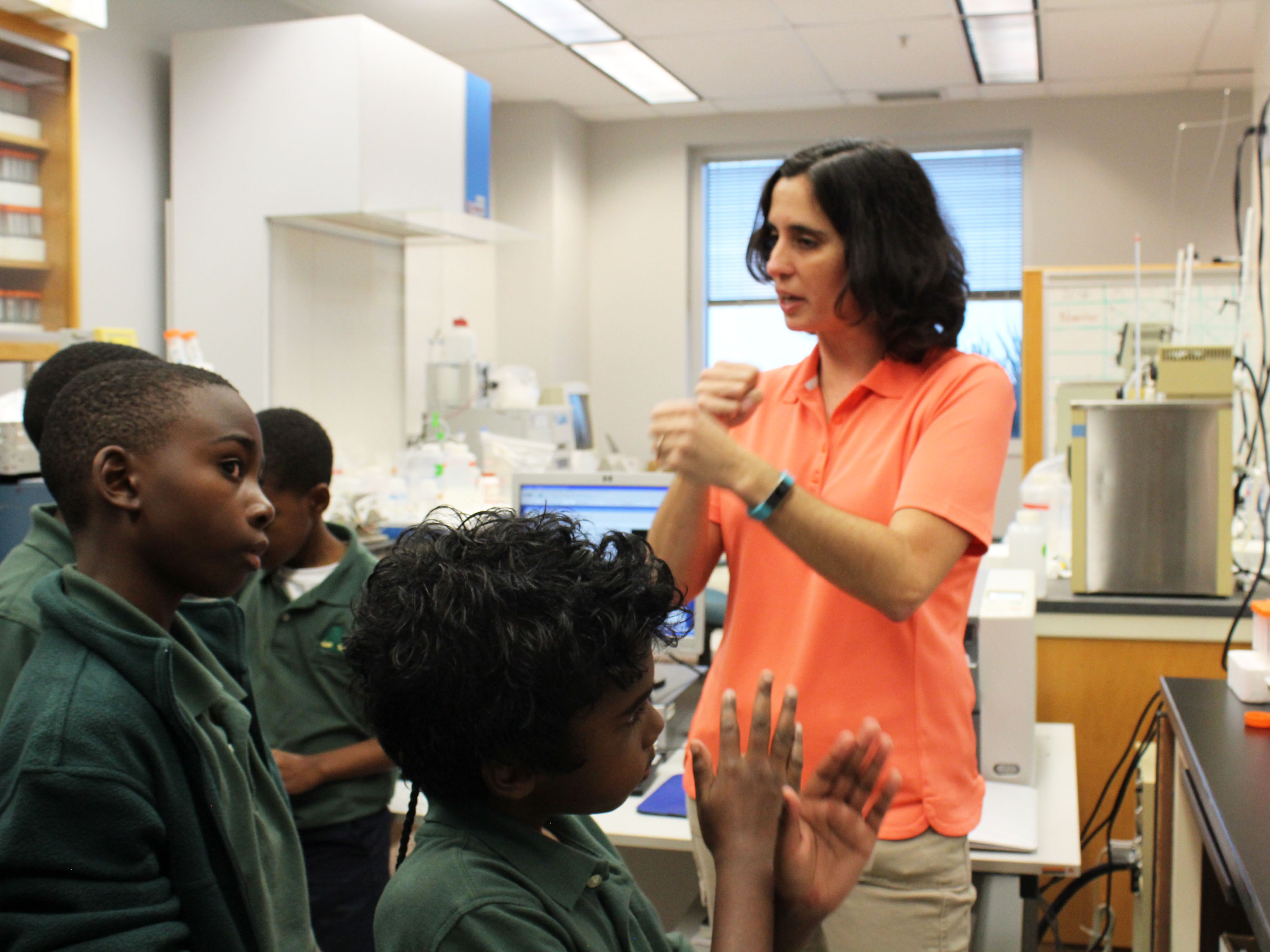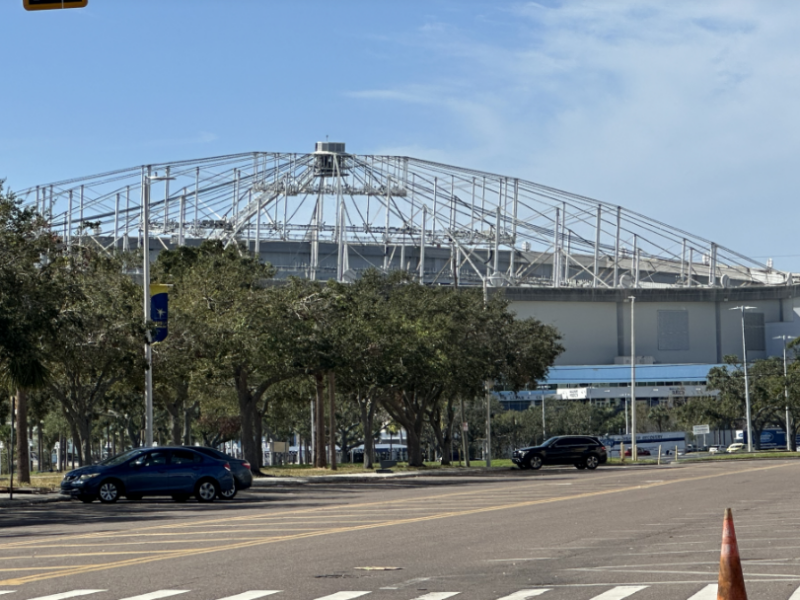Above photo: Kelly Quinn guides Academy Prep students inside her laboratory and explains how the water is tested. Courtesy of Neighborhood News Bureau
By Emily Wunderlich
“How safe is our drinking water?”
Journalism professor Bernardo Motta posed that question to his students in Neighborhood News Bureau after the Flint water crisis hit the tabloids in 2016.
“For the students in NNB, this was a massive research project,” Motta said. “They learned a lot of investigative tools. We had groups just looking at the history of housing developments in St. Petersburg to see which houses would be the best targets for our experiment.”
NNB covers the historic African-American neighborhoods of St. Petersburg’s midtown area. One of its major projects includes Midtown K-12 news – a program seeking to improve journalism and media education in schools in south St. Petersburg.
The Academy Prep Center of St. Petersburg is one of those schools.
After obtaining a research grant from the University of Missouri, Motta enlisted the help of social studies teacher Laura Manke, who works closely with him to coordinate Academy Prep’s media club.
As the school’s science fair was approaching, Manke originally wanted the media club to cover the event; however, Motta had other ideas.
“NNB had this idea for the project of testing water for lead in the neighborhood, and I thought that could be the perfect link. ‘How could we get access to people’s houses?’ Well, students have access to their own houses,” Motta said.
Students who were interested in participating in the experiment could sign up for it through an after-school enrichment program called “Community Cares.”
But before they could begin collecting water samples, students were required to research the harmful effects of lead in drinking water.
“They really got to experience science firsthand,” Manke said. “I had students also train other students on how to collect the samples, so they got leadership skills to pass on that information, which you can’t always do in your classroom every day, so that was really great.”
In addition to collecting water samples, students also wrote about their findings. Three of Manke’s sixth graders were published in STEAM City Kids, an online magazine for student journalists promoting science, technology, engineering, art and math.
“The most meaningful part was that my students got to have autonomy over doing something,” Manke said. “They were really given very adult responsibilities for fifth and sixth graders.”
Academy Prep students also got to visit USF St. Petersburg’s College of Marine Science, where research associate Kelly Quinn analyzed the water samples.
“The whole experience was good,” Quinn said. “I run samples all the time, so that wasn’t special or overly interesting for me, but the fact that students were involved – and not just college-level students, but middle schools kids that collected the samples and came and saw my lab – it’s always great to have kids come and see the lab and hopefully be excited about science.”
Quinn found that lead was present in the water but at levels well below the EPA limit, which is set at 15 parts per billion. The average lead content for all samples on the first draw was one part per billion.
That was when graduate student Andrea Perez realized the lack of awareness surrounding health hazards in the community. She took the reins on the project, shifting its focus from reporting to community education and proposing solutions.
“It’s really not about the breaking news, it’s just about thinking, ‘What information will make everyone make better decisions?’ Especially in the community that they live and especially if it’s about their health,” Perez said.
In addition to the drinking water investigation, a collaboration is underway between NNB, WUSF Health News Florida and the American Heart Association. Students are working to produce 90-second videos on various topics on health in education. The project will be complete by the end of the semester.
NNB also hopes to launch a comprehensive database of local black history in September.
“We have been developing a digital tool that’s both a map and timeline together,” Motta said. “So we have a series of historical maps and photos where people can go and look through storylines of things that happened in south St. Petersburg.”
Although Perez finished the water investigation story, she hopes that NNB will continue to follow up with it long after it’s published.
“I always believe that when you’re a reporter, it doesn’t end when you finish the story,” she said. “You kind of always want to have a notebook where you’re writing down things that were kept unanswered. Just go back to that.”
“There is always a lot of stuff that is never answered and has to be discussed. I just hope that NNB has that figurative, fat notebook,” Perez said.



